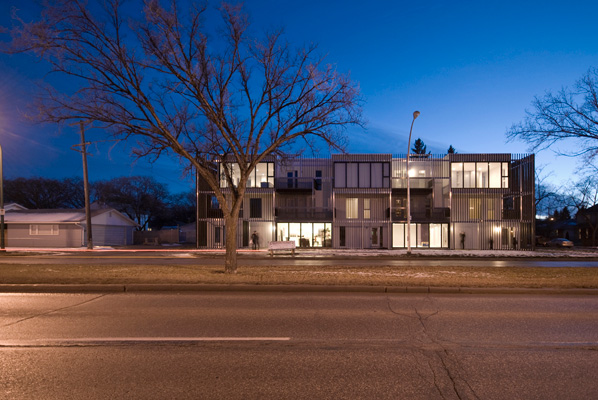In cities across North America, older residential neighbourhoods have undergone gentrification as more and more people rejected suburbia and a life spent either stuck sitting in traffic or doing yard work. In the 1970s, these “urban pioneers” discovered the cities’ best neighbourhoods; the ones with the most charming architecture and best amenities.
By the 1990s, these initial gentrification hotspots (Brooklyn’s Park Slope, Toronto’s Yorkdale, and Vancouver’s Kitsilano) had become too expensive for anyone, almost to the point of being comical. And so, waves of young buyers moved on to the comparatively modest, historically sketchy neighbourhoods further afield (Bed-Stuy, Parkdale, Commercial Drive).
The same pattern occurred in Winnipeg, though, as one might expect, a decade or so behind the curve and at a much less dramatic pace. In the 1980s, buyers with urban sensibilities slowly began to move onto the most charming blocks in Wolseley and Fort Rouge. As recently as the early 2000s, it was still possible to buy a nice house on Ethelbert or McMillan for what a tear-down bungalow in the North End would cost today.
Winnipeg’s housing costs have continued to rise over the past decade and, according to the Winnipeg Real Estate Board, will continue to rise in 2013. The rental vacancy rate, meanwhile, is still hovering around 1%. It becomes hard for many people to buy a house in any decent neighbourhood, and harder and harder to find suitable rental accommodation.
[related_content slugs=”winnipeg-doesnt-need-a-bigger-convention-centre,memories-from-skid-row-mcdinos,what-we-can-learn-from-winnipegs-walkability-score” description=”More from Robert Galston” position=”right”]
As housing affordability becomes an increasingly significant issue, affordable housing proponents call for greater involvement by governments in providing housing. Downtown development boosters hope for highrise development on many of the large, gaping surface parking lots downtown, and the underused industrial land in South Point Douglas.
Doing both are important, but old neighbourhoods with currently strong demand pressures (Wolseley, Fort Rouge, Riverview, Old River Heights, parts of St. Boniface) should also be allowed to be better able to increase the supply of housing options. While demand for these neighbourhoods has grown, zoning regulations and neighbourhood planning has helped make increasing the supply hard to do.
The irony is that the physical character of cherished central neighbourhoods are very much the expression of a lack of planning and the organic transition toward more compact forms between 1900 and 1930. Current regulations, which focus on separating uses, setting buildings back from the street, and providing lots of parking, has essentially crystallized the look of these neighbourhoods and shrunk their populations. (The McMillan neighbourhood north of Corydon Avenue, for example, has lost 40% of its population since 1971.)

Our Winnipeg, the city’s long-term planning document, generally espouses mixed-use, densely-populated neighbourhoods in the city centre, but the specific Zoning By-law (2006) does much to prevent this from easily occurring. Single-family houses must be built at a minimum of 5,000 square feet (the typical single-family lot in the West End or Fort Rouge is between 2,500 and 3,500 square feet). Multi-family developments like an apartment or condo development must have 1.5 parking spaces for every dwelling unit.
These requirements can be, and regularly are, circumvented when the developer applies for zoning variances, which involves scheduled hearings at City Hall. But this means a loss of time, money, confidence, and sanity that isn’t involved in building new development on the edge of the city (something Our Winnipeg seems to frown on, but the Zoning By-law practically requires).
While residents of Old River Heights or Norwood may fear their neighbourhood turning into Manhattan, greater density and housing options don’t always mean massive apartment blocks. Vancouver has found that secondary suites (small dwellings in the back yard, for example) can provide affordable housing options in single-family neighbourhoods without significantly altering the neighbourhood’s character.
From a demand perspective, allowing greater density and housing diversity in older residential neighbourhoods will mean they can provide renters and owners with a range of choices. From a supply perspective, it will help to make doing infill competitive to building on farmland.
Allowing for greater density will not make owning a gorgeous 1,600 square foot Edwardian-era house cheap again — these houses were built for the middle class a century ago, and there’s no logical reason to prevent them from being housed by middle class people now. It will, however, offer a chance for not just the wealthy to live in that neighbourhood — in new apartments, condos, or secondary suites.
___
Robert Galston likes to write about Winnipeg, urbanism, and other very, very exciting topics. Follow him on Twitter @riseandsprawl
For more, follow us on Twitter: @SpectatorTrib
